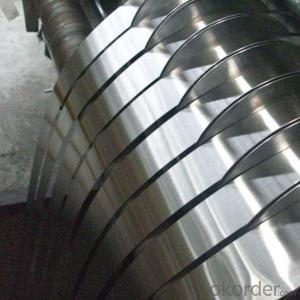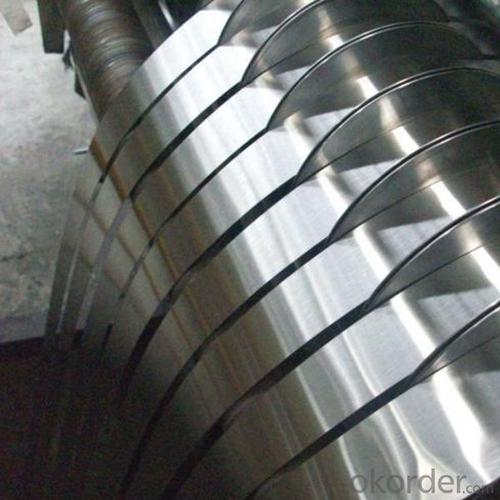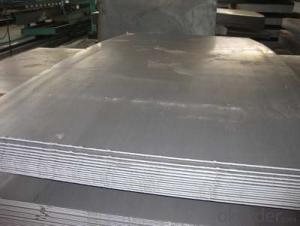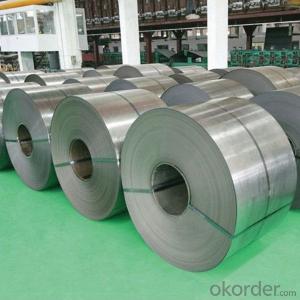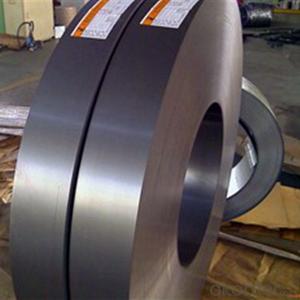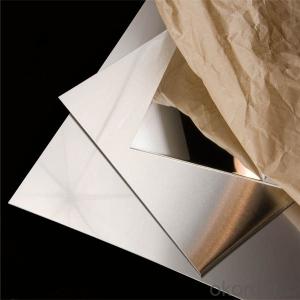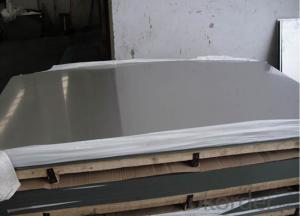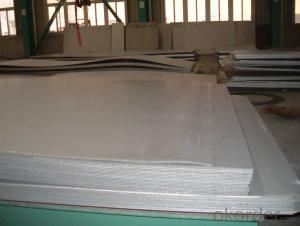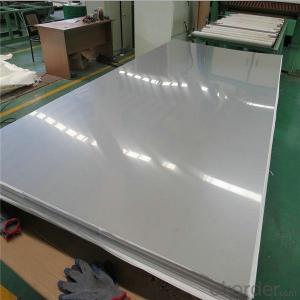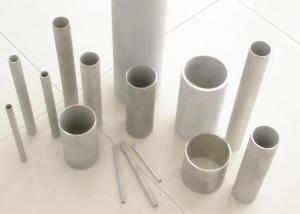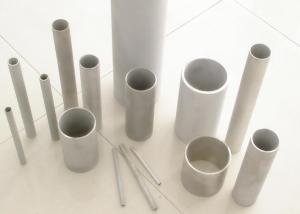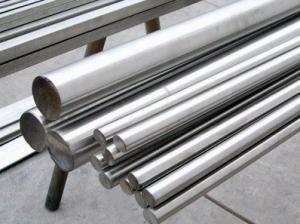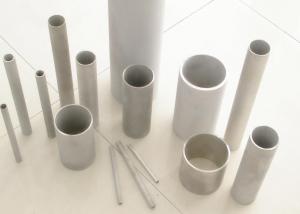Steel Stainless 304L 2016 New Products Good Quality
- Loading Port:
- Tianjin
- Payment Terms:
- TT OR LC
- Min Order Qty:
- 28 m.t.
- Supply Capability:
- 25 m.t./month
OKorder Service Pledge
OKorder Financial Service
You Might Also Like
Specification
Products Description for Stainless Steel Coils/Sheets:
Name: stainless steel coils/plates/sheets
Discharge Port: Any Port, China
Cold Rolled Size: Thickness0.3-8mm,Width:280-2100mm
Hot Rolled Size: Thickness3-14mm,Width:650-2100mm
Hot Rolled/Cold Rolled Plates : Thickness2-80mm,Width:1500-3000mm
Coil Weight: About 20 Tons
Grade: 201,202,304/304L/304H, 316/316L/316H, 409/L,430 etc.
Technique: Hot Rolled/Cold Rolled
Finish:2B, BA, 2D, No1, No2 etc
Edge: Mill Edge / Slitting Edge
Packaging: In bundles, or as customer's requirement
Place of Origin: Made in China
MOQ: 20 Tons
Payment Terms: 100% LC at sight, or 100%TT in advance
Delivery Time: With 30-40 days after deposit
Packaging & Delivery for Stainless Steel Coils/Sheets:
Packaging Detail Standard export packing or following customer's demand
Delivery Time: Within 30-40 days after deposit or according to the order quantity
Details for the products:
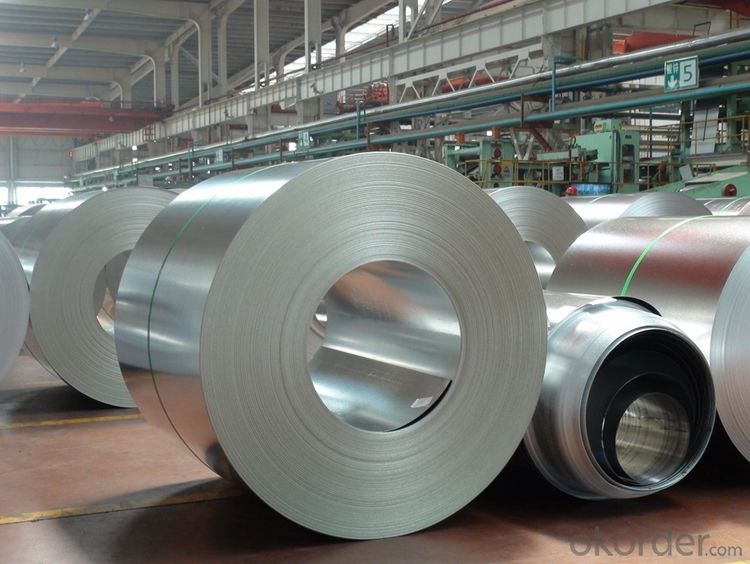

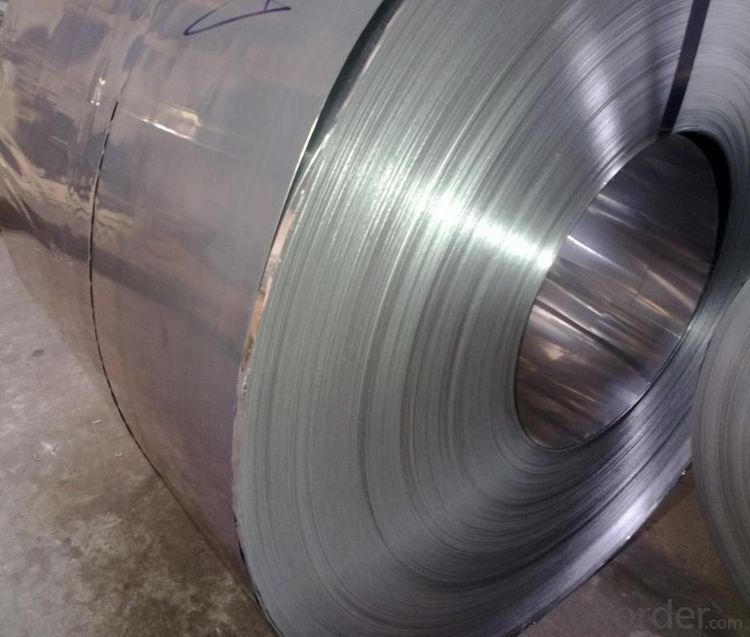
Features of Stainless Steel Coils
(1)Good ductility
(2)Good corrosion resistance
(3)Excellent abrasion resistance and fatigue strength
(4)Good weldability
(5)Oxidation resistant performance
(6)Excellent in high temperature
Packaging & Delivery for Stainless Steel Coils/Sheets:
Packaging Detail | Standard export packing or following customer's demand |
Delivery Time | Within 30-40 days after deposit or according to the order quantity |
FAQ for Stainless Steel Coils/Sheets:
Q:How to order?
A: Please send us your purchase order by email or fax .or you can ask us to send you a proforma invoice for your order .We need to know the following information for your order.
1) Shipping information-company name, street address, phone number, fax number, destination sea port
2) Product information – Quantity, Specification (steel type, thickness, width, surface finish)
3) Delivery time required
4) Forwarder's contact details if there's any in China
FAQ for Stainless Steel Coils/Sheets:
Q:What are the advantages of your company ?
A: We have many professionals, technical personnel, more competitive prices and best after-dales service than other stainless steel companies.
Q:Can you arrange the shipment ?
A: Sure we can help you with the shipment. We have forwarders who have cooperated with us for many years.
- Q: What are the different types of stainless steel sheet edges?
- There are three main types of stainless steel sheet edges: mill edge, slit edge, and deburred edge. 1. Mill Edge: This is the most common type of stainless steel sheet edge. It is produced during the manufacturing process and is characterized by a rough, unfinished edge. The mill edge is typically straight and perpendicular to the surface of the sheet. It is suitable for most applications where a smooth edge is not required. 2. Slit Edge: Slit edge stainless steel sheets are created by cutting large rolls of stainless steel into narrower widths. The edges of these sheets are smoother and more precise compared to the mill edge. Slit edge sheets are commonly used in applications where a more polished and precise edge is needed, such as in architectural finishes or fabrication processes. 3. Deburred Edge: A deburred edge is achieved by removing any sharp or rough edges from the stainless steel sheet. This is done to enhance safety and prevent injury during handling or installation. Deburring can be done through various methods, such as grinding, sanding, or using specialized tools. The resulting edge is smooth and free from any burrs or sharp protrusions. It is important to note that the choice of edge type depends on the specific application and requirements of the stainless steel sheet. Each edge type has its own advantages and limitations, and it is crucial to consider factors such as aesthetics, functionality, and safety when selecting the appropriate edge for a particular project.
- Q: Are stainless steel sheets resistant to galvanic corrosion?
- Yes, stainless steel sheets are resistant to galvanic corrosion. Galvanic corrosion occurs when two dissimilar metals come into contact in the presence of an electrolyte, such as moisture or saltwater. In such cases, one metal acts as an anode and the other as a cathode, leading to the transfer of electrons and the corrosion of the anode. Stainless steel is an alloy that contains chromium, which forms a passive oxide layer on its surface. This oxide layer acts as a protective barrier, preventing the transfer of electrons and thus effectively resisting galvanic corrosion. The chromium in stainless steel reacts with oxygen in the air to create a thin, invisible, and self-repairing layer of chromium oxide. This layer provides excellent corrosion resistance and makes stainless steel highly resistant to galvanic corrosion when in contact with other metals. However, it is important to note that the level of corrosion resistance may vary depending on the specific grade and composition of stainless steel used. Some stainless steel alloys, such as Type 316 stainless steel, offer even higher resistance to galvanic corrosion due to the addition of molybdenum, which enhances its corrosion resistance in aggressive environments. In summary, stainless steel sheets are generally highly resistant to galvanic corrosion due to the presence of a passive chromium oxide layer on their surface. This makes stainless steel a reliable choice for applications where galvanic corrosion is a concern, such as in marine environments or when in contact with dissimilar metals.
- Q: Can stainless steel sheets be used in automotive industry?
- Yes, stainless steel sheets can be used in the automotive industry. Stainless steel is a popular material choice in the automotive industry due to its various advantageous properties. It offers excellent resistance to corrosion, making it suitable for parts that are exposed to harsh weather conditions, such as car exteriors and body panels. Stainless steel sheets are also known for their high strength-to-weight ratio, which allows for the design and production of lightweight yet durable automotive components. Additionally, stainless steel is highly resistant to heat and can withstand high temperatures, making it suitable for applications such as exhaust systems. Overall, stainless steel sheets are widely used in the automotive industry for their durability, corrosion resistance, and versatility in various applications.
- Q: What is the difference between stainless steel sheets and regular steel sheets?
- The main difference between stainless steel sheets and regular steel sheets is that stainless steel is an alloy that contains a minimum of 10.5% chromium, which gives it its unique corrosion-resistant properties. Regular steel, on the other hand, does not contain enough chromium to be considered stainless and is more prone to rust and corrosion. Stainless steel sheets are also typically more expensive than regular steel sheets due to their enhanced durability and resistance to corrosion.
- Q: What are the advantages and disadvantages of net drawing stainless steel users?
- Drawing process will to some extent lose the thickness of stainless steel plate, usually at 0.1~0.2mm. In addition, because the human body, especially the palm has a relatively strong oil and sweat secretion, stainless steel wire drawing board often hand touch will leave a more obvious fingerprints, regular scrub.
- Q: Can stainless steel sheets be used in the medical industry?
- Stainless steel sheets have the capability of being utilized within the medical industry. This is because stainless steel is a favored material within the medical field due to its exceptional resistance against corrosion, its remarkable strength, and its ability to endure. It is commonly employed for a diverse array of purposes, encompassing medical instruments, surgical tools, dental equipment, implants, and medical machinery. Moreover, stainless steel sheets are uncomplicated to cleanse and sterilize, rendering them perfect for maintaining hygienic conditions within medical settings. Furthermore, stainless steel is biocompatible, signifying that it is harmonious with human tissues and does not elicit any unfavorable reactions, thereby making it a secure option for medical applications. All in all, stainless steel sheets are exceedingly appropriate for usage within the medical industry due to their myriad advantageous qualities.
- Q: What are the different types of brushed finishes available for stainless steel sheets?
- There are several types of brushed finishes available for stainless steel sheets, including satin, mirror, hairline, and bead blasted finishes.
- Q: What are the properties of stainless steel sheets?
- Stainless steel sheets possess multiple properties that make them extremely desirable in various industries and applications. To begin with, their excellent corrosion resistance is a result of the presence of chromium in the alloy, which forms a protective oxide layer on the surface, preventing rust and staining. Moreover, stainless steel sheets are renowned for their strength and durability. They can withstand heavy loads and resist deformation due to their high tensile strength. This makes them suitable for applications requiring structural integrity and longevity, such as in construction, automotive, and aerospace sectors. Another significant property of stainless steel sheets is their resistance to heat and fire. They can endure high temperatures without losing their structural integrity or strength. As a result, they are ideal for applications involving extreme heat, like commercial kitchens and industrial furnaces. Additionally, stainless steel sheets are hygienic and easy to clean, making them suitable for use in the food and medical industries. Their non-porous surface prevents the growth of bacteria, making them a reliable choice for food processing equipment, surgical instruments, and medical devices. They also possess an attractive appearance, with a smooth, reflective surface that is easy to maintain. This makes them aesthetically pleasing and suitable for architectural and decorative applications, such as building facades, interior design, and furniture manufacturing. Lastly, stainless steel sheets are highly versatile and can be easily formed, welded, and fabricated into various shapes and sizes. This flexibility allows for customization and adaptation to specific project requirements, offering designers and engineers a wide range of possibilities. In summary, stainless steel sheets offer corrosion resistance, high strength and durability, heat and fire resistance, hygiene, ease of cleaning, an attractive appearance, and versatility. These properties have made them a popular choice in numerous industries, ensuring their widespread use in various applications.
- Q: What are the different types of perforated finishes available for stainless steel sheets?
- There are several different types of perforated finishes available for stainless steel sheets, each offering a unique look and functionality. 1. Round Hole: This is the most common type of perforated finish for stainless steel sheets. It features evenly spaced round holes that provide a modern and clean aesthetic. 2. Square Hole: Similar to the round hole finish, square holes are evenly spaced but have a square shape. This finish is often chosen for its simple yet distinctive appearance. 3. Slotted Hole: Slotted hole perforated finishes have elongated holes, which can be either straight or staggered. This type of finish is often preferred for its decorative appeal and ability to provide excellent ventilation. 4. Hexagonal Hole: Hexagonal hole perforated finishes have six-sided holes, offering a visually appealing and unique pattern. This finish is commonly used in architectural applications to create a modern and eye-catching design. 5. Decorative Patterns: In addition to the standard hole shapes mentioned above, stainless steel sheets can also be perforated with various decorative patterns. These patterns can include floral designs, abstract shapes, or custom designs, allowing for a truly unique and personalized finish. It is important to note that the choice of perforated finish depends on the intended use of the stainless steel sheet. Factors such as the desired appearance, functional requirements (such as ventilation or filtration), and the specific application will all influence the selection of the appropriate perforated finish for stainless steel sheets.
- Q: What are the different types of stainless steel sheet alloys?
- There are several different types of stainless steel sheet alloys, including austenitic, ferritic, martensitic, and duplex stainless steel. Each alloy has unique characteristics and is suitable for various applications based on factors such as corrosion resistance, strength, and heat resistance.
Send your message to us
Steel Stainless 304L 2016 New Products Good Quality
- Loading Port:
- Tianjin
- Payment Terms:
- TT OR LC
- Min Order Qty:
- 28 m.t.
- Supply Capability:
- 25 m.t./month
OKorder Service Pledge
OKorder Financial Service
Similar products
Hot products
Hot Searches
Related keywords
